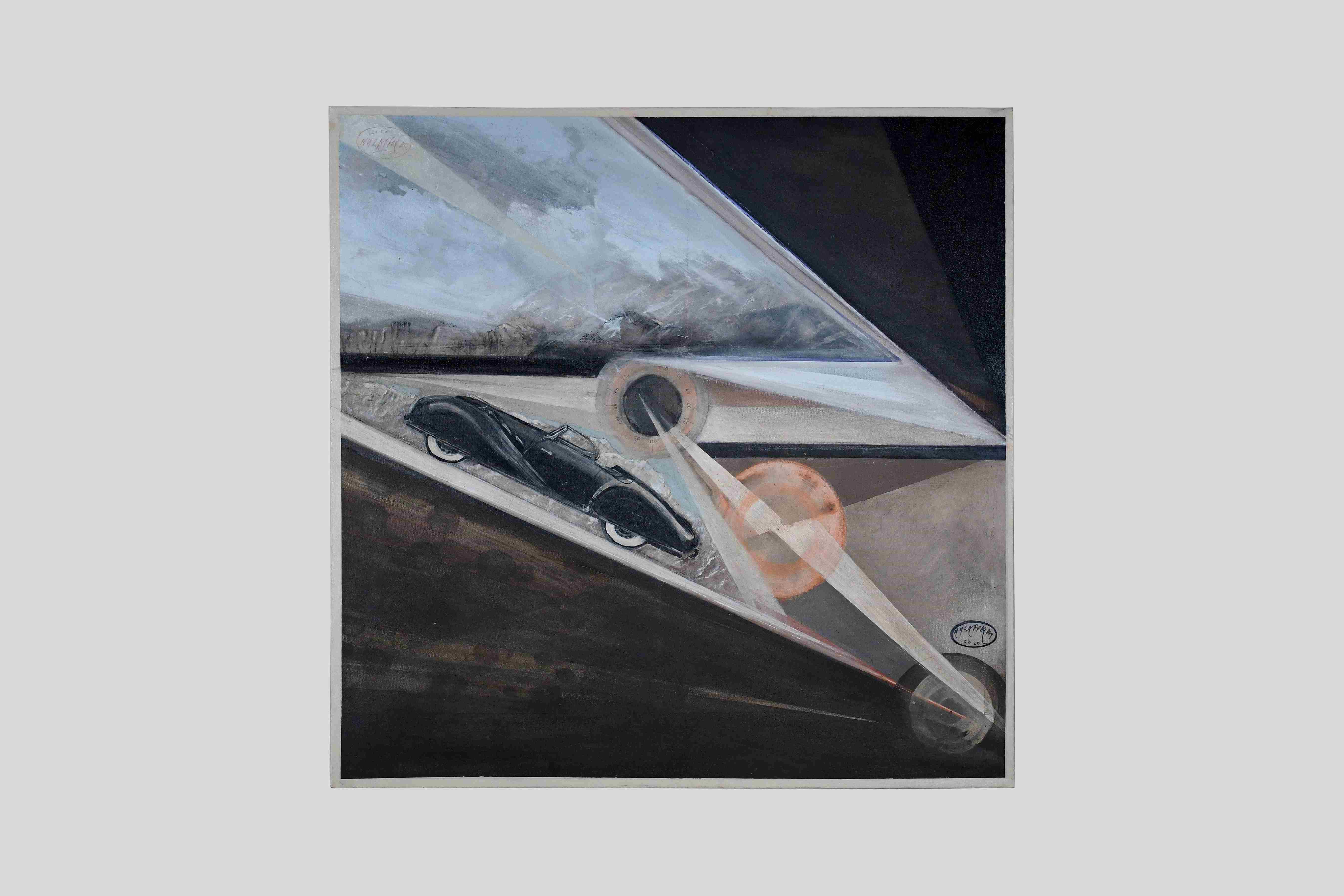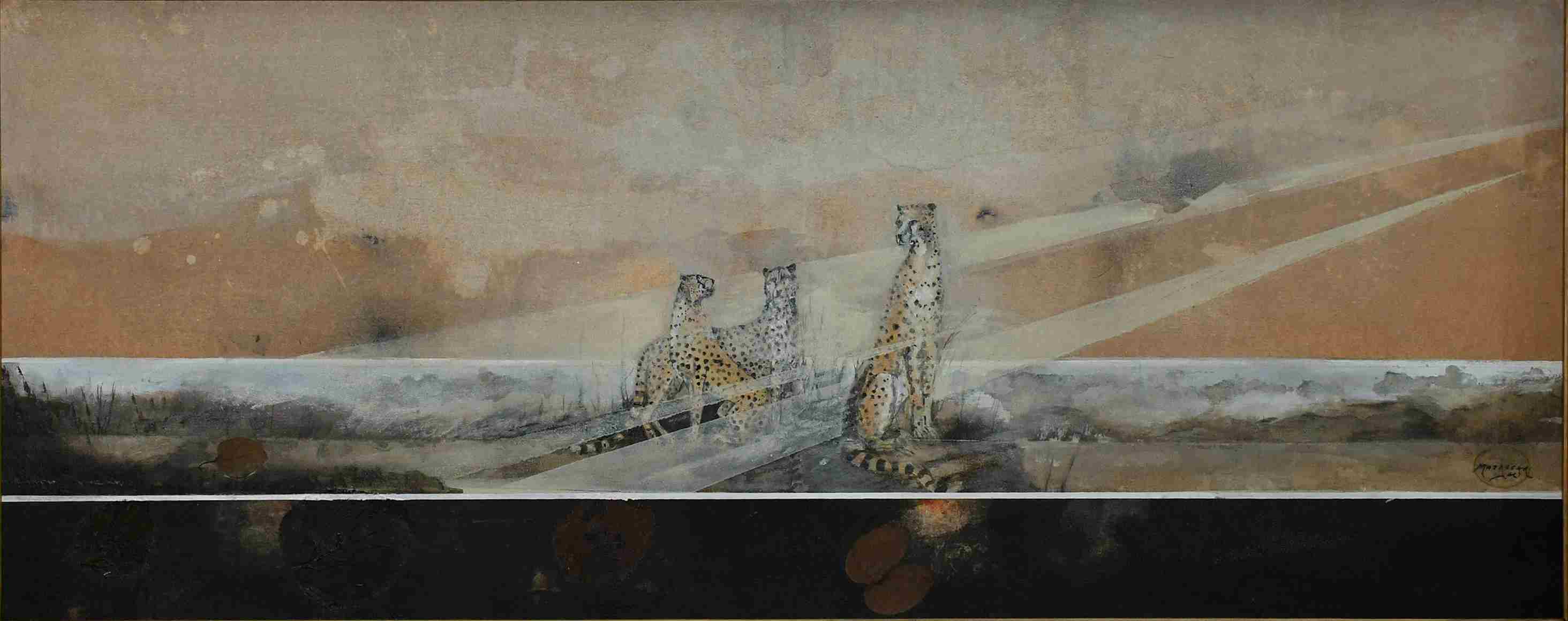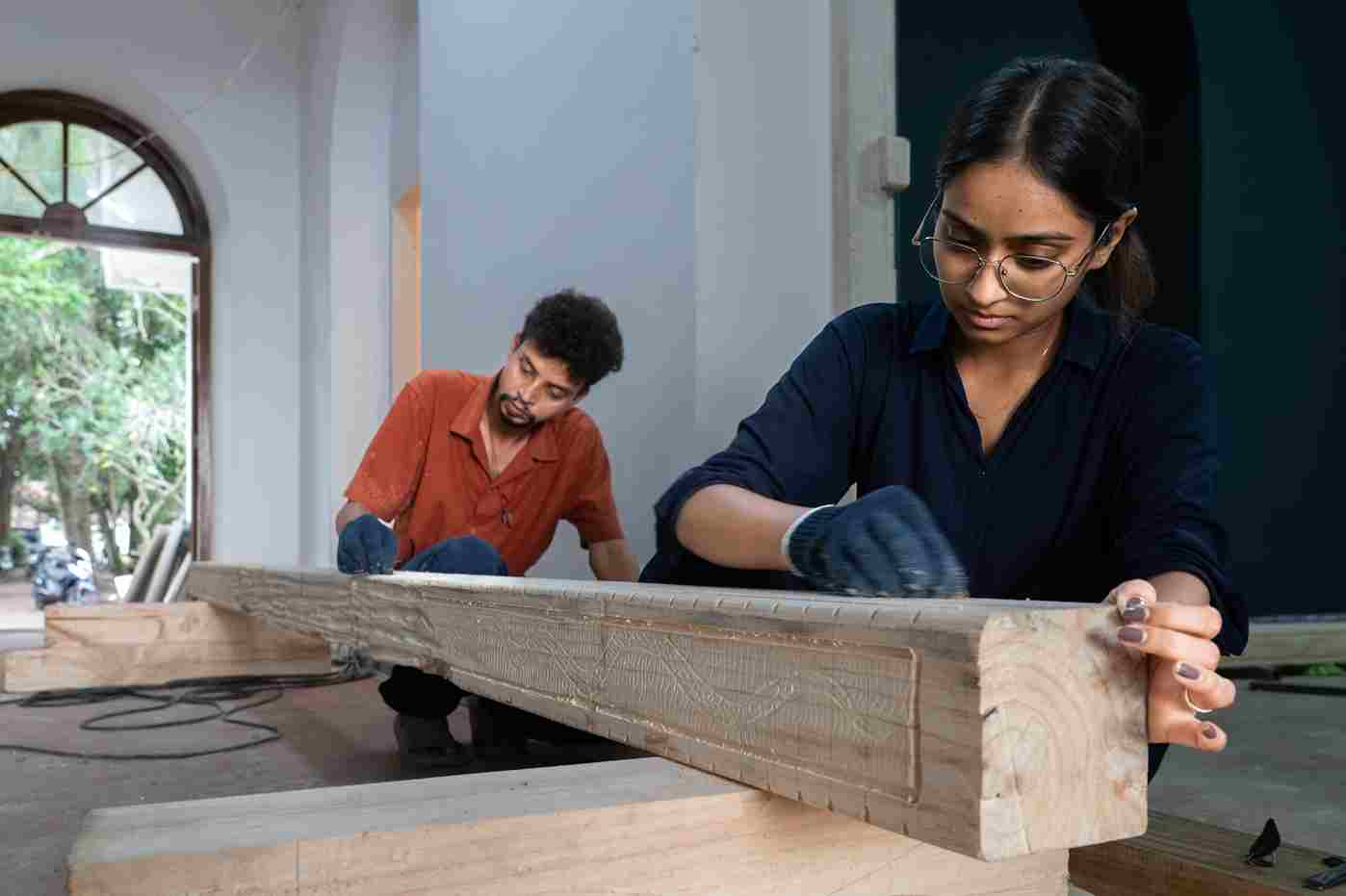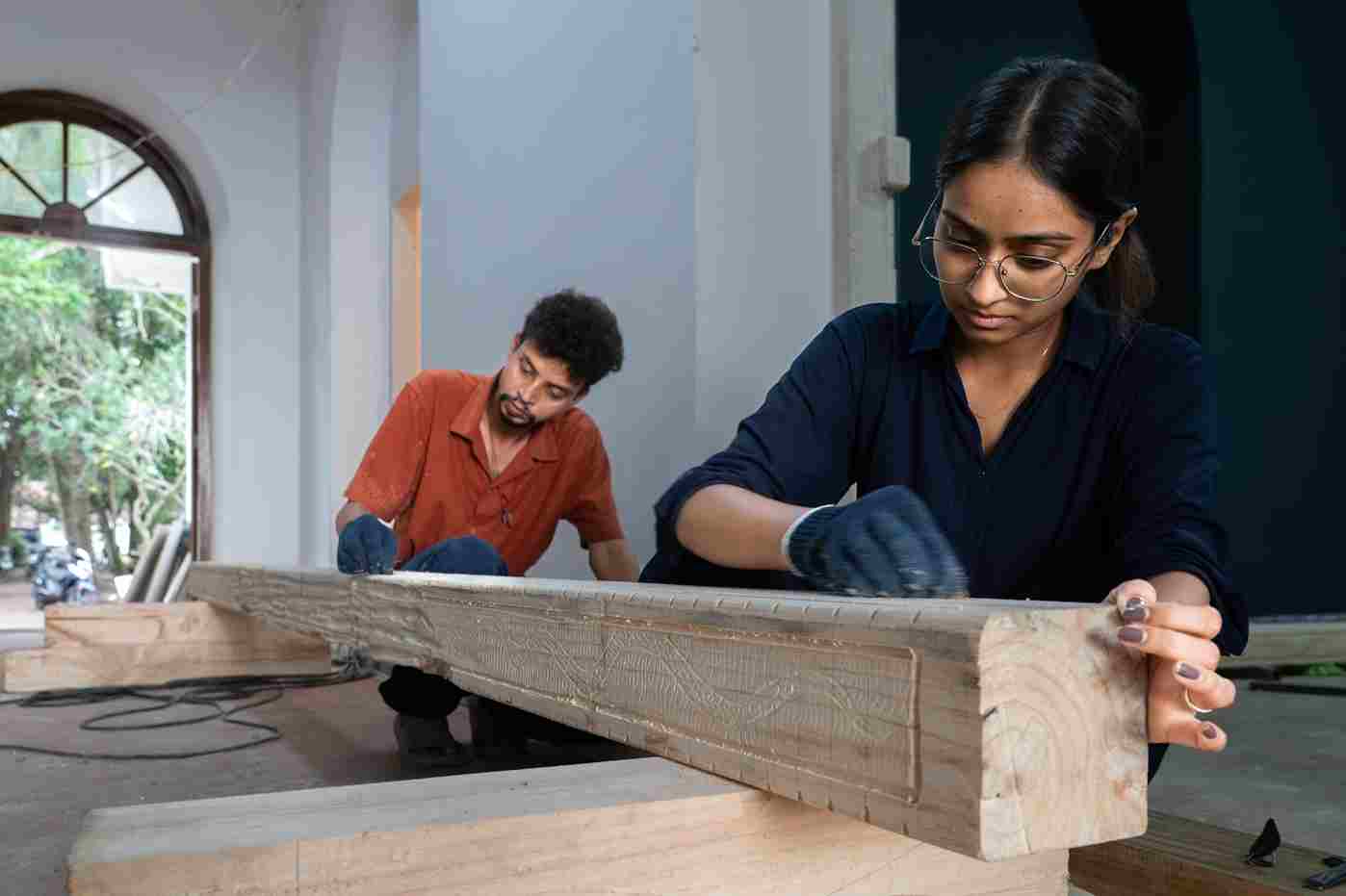Why cars and how cheetahs at Muzaffar Ali’s all-inclusive show of paintings
Why cars and how cheetahs at Muzaffar Ali’s all-inclusive show of paintings
New Delhi / January 17, 2023
New Delhi, Jan 17: Five-and-a-half decades ago when Muzaffar Ali moved to Calcutta, the youngster carried no signs of a plush life he led as a member of the erstwhile Awadh royal family in Lucknow. “The migration was to make a living. I wanted to stand on my own,” says the multifaceted personality, currently in the national capital that is hosting a pioneering exhibition of the filmmaker’s non-cinema artworks.
The eleven-day show at Bikaner House near India Gate has section of Muzaffar’s paintings on cars, though they have practically nothing to do with the vehicles he saw in the West Bengal metropolis during the late 1960s. “There I actually rode a bicycle along the roads and streets,” he reminisces, sitting in the gallery which is hosting the January 11-21 event titled ‘Muzaffar Ali’. “In fact, all I had those days was a tin trunk. One in which I kept my clothes and other things of day-to-day use.”
Today, at the dawn of 2023, Muzaffar Ali has turned a milestone in his cultural life defined by obsessive engagements with visual arts. Notwithstanding his public fame that primarily rests on self-directed Hindi movies such as Umrao Jaan (1981) and the debut Gaman (1978), Muzaffar’s odyssey as a creative visual artist has had its colourful mainstay with the canvas and brush. “It has now covered half a century,” notes scholar Uma Nair, who has curated the show, slated to conclude this weekend. “It is an inspiring story of self-reinvention, one that includes his many sojourns all over India.”
In fact, amid his struggles as an aspiring professional at an advertising firm in Calcutta, Muzaffar came up with his first painting exhibition in the eastern metropolis. That was in 1968. “Those days I did crayons and oils, and even began selling a few of my abstract paintings,” recalls the 78-year-old icon, whose chosen works are on display at the current event being organised by Masha Art.
Young Muzaffar had reached Calcutta shortly after higher studies at the famed Aligarh Muslim University, 350 km northwest of his native place. Besides botany and chemistry, his chief academic subject was geology. The earth science enabled “me to see a world within a world, the outside and inside of rocks”, he notes. This unique sensibility also emerged from his oils and crayons. “Since then the rocks have persisted in my art.”
The urban belts where Muzaffar has spent much of his life went on to kindle his childhood love for cars. Not surprisingly, this vehicle occupies centrality in the large as well as small works at the ongoing Delhi show. “Often they juxtapose with landscapes,” notes curator Uma, who spent a year researching on Muzaffar’s artworks. “Not merely the exteriors, but the windscreen and even the dashboards come into focus on the canvas, mirroring the artist’s mood — or reverie as one must call it. His choice of colours is a mix of western and eastern artistic traditions.”
As Masha Art CEO Samarth Mathur points out, ‘Muzaffar Ali’ is a melange of material that straddles history and human experience. “It unveils the infinite possibilities in the world of art and design,” he adds. “Our objective is to ensure that both artists and collectors get an opportunity to engage with new audiences.”
To Muzaffar, cars are the “greatest toy of the 1900s”, uniting the “miracle” of petroleum and engineering. “They have wheels to take your imagination to places,” he notes, listing a range of locales including snow-capped mountains “where we only go in our dreams”. This takes “my automobile into a rare zone of being a child loaded with memories fragrant with nostalgia of wood, leather and congealed Mobil oil.”
Clearly, the artist senses no binaries in appreciating beauty in nature and technology. “You see it in his love for, say, horses and cheetahs,” Uma says, referring to the two animals that are part of the theme of the show featuring eight rooms (named ‘maqaams’ or spiritual stations). The cheetahs are winning special appreciation from the visitors, also considering that the exhibition comes barely four months after the country got a set of the fast-running big cats translocated from South Africa to Madhya Pradesh, ending seven decades their ‘extinct’ status in India.
Muzaffar’s painting of three cheetahs is a panoramic work that shows the animals sitting with grace. “It sets off an emotive essence of life, as the cheetahs rest against the larger expanse of the park amid a dreamlike atmosphere of a day-filled sky with a shifting play of light and shadow,” notes Uma. “The three cheetahs retain the narrative character and cultural presence of the traditional landscape. The work retains its fresh charm with an appealing sparseness.”
The cultural revivalist has simultaneously headed juries at festivals amid a flourishing fashion-designing career, inspired also by his stylist-wife Meera Ali.





